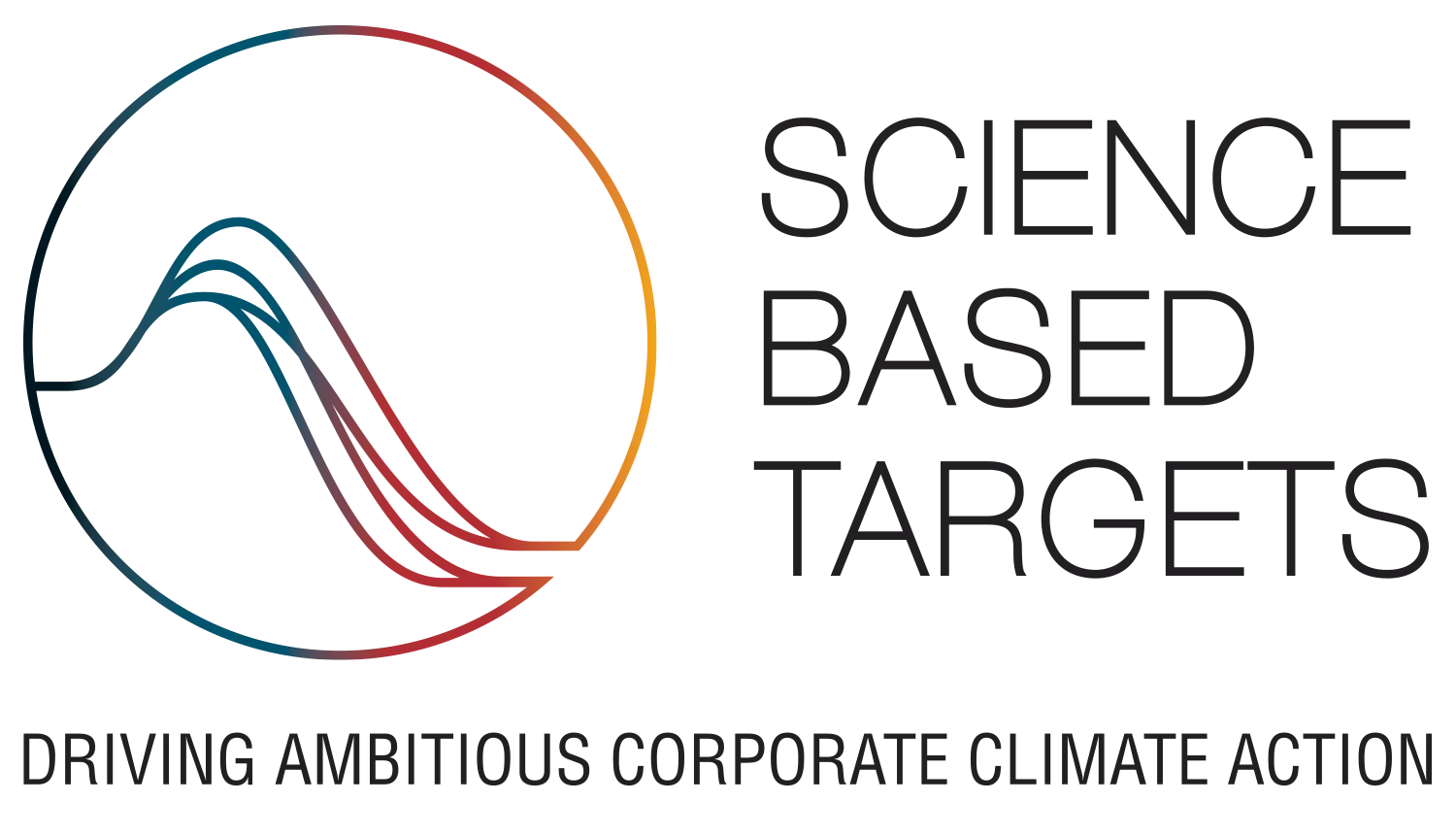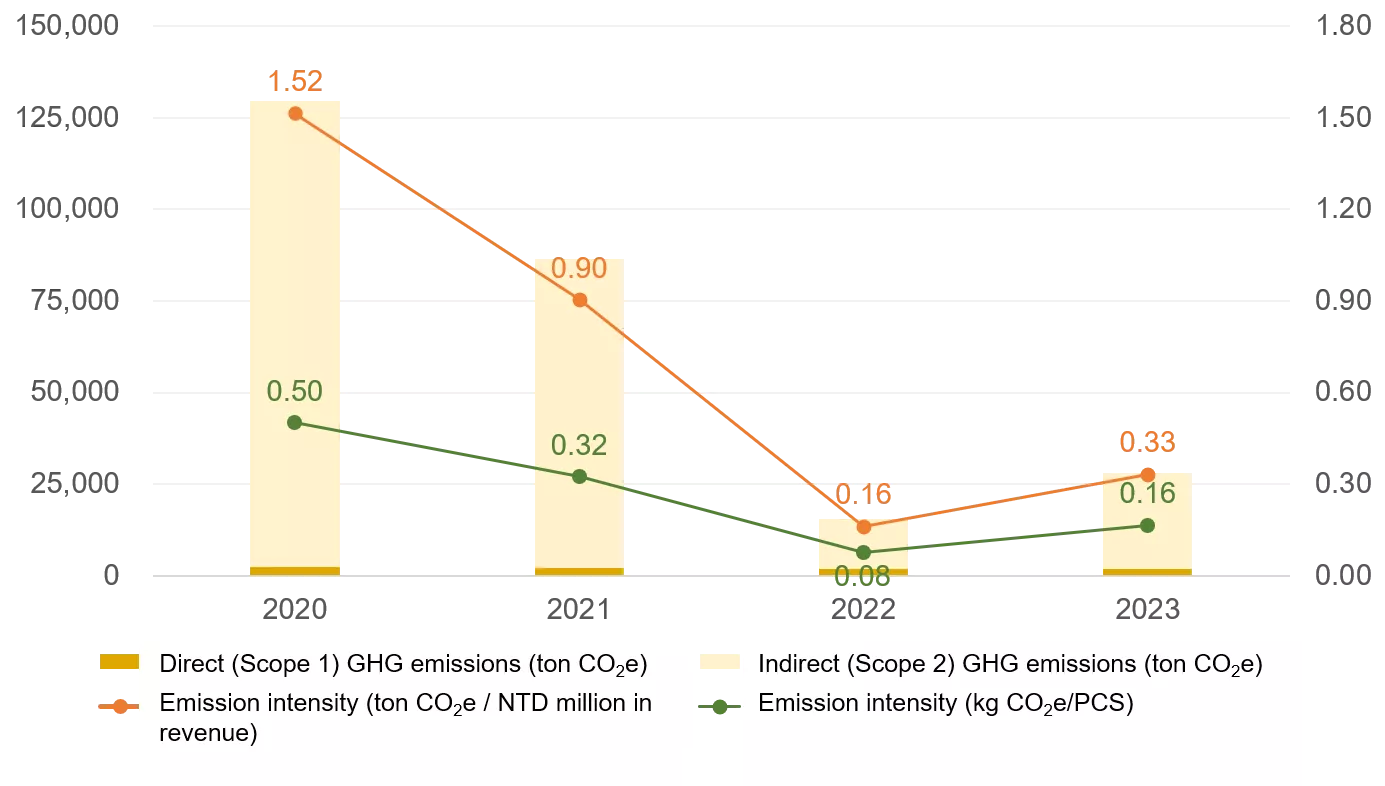Climate Change Strategy
|
|
 |
|
Renewable Energy Strategy
|
|
 |
|
Science-Based Targets initiative (SBTi)
|
|
 |
 |
|
Simplo signed the “SBTi Commitment” in 2021 and submitted the carbon reduction target in 2022. Simplo sets emissions reduction targets in line with a 1.5°C future, and Group’s near-term emissions reduction targets are approved by the SBTi in May 2023 (note1). Simplo is the first company in the global battery module manufacturing industry to pass the review. Simplo commits to reduce absolute scope1 and 2 GHG emissions 51% by 2030 from a 2020 base year. Simplo Technology also commits to reduce absolute scope3 GHG emissions from purchased goods and services 25% within the same timeframe. In the future, Simplo will actively take carbon reduction actions, including: introducing the ISO 50001 management system, installing solar PV systems, signing renewable energy power purchase agreements, designing green products, using recycled materials, etc. At the same time, key suppliers will be included in the emission inventory and emission reduction actions, implement carbon reduction goals, and built a sustainable partner co-prosperity ecosystem.
Simplo Group Carbon 2050
|
|
 |
|
2.*Purchasing goods and services classified according to the GHG protocol.
3.This near term target follows 1.5ºC path and has been certified by SBTi.
Internal Carbon Pricing (ICP) Strategy
Facing the generation of low-carbon emission or zero-carbon emission, the international community has promoted carbon fees and Carbon Border Adjustment Mechanism (CBAM), which will increase the carbon cost burden of the industry. Carbon risk management has become an important topic for companies, and companies are also aware of the profound impact of carbon risks on operations, thus launching the ICP mechanism. Simplo is committed to implementing the sustainable strategy blueprint, moving towards the goal of low carbon emissions or even net zero carbon emissions. In order to accelerate the group's carbon reduction actions, Simplo actively develops an ICP mechanism and tracks the international carbon trading market as reference for internalize external costs. Valuation of carbon emissions promotes the reduction of carbon emissions in the group's internal activities. In addition to developing low-carbon processes in the manufacturing process, it can also encourage employees to implement energy conservation and carbon reduction in their work, and strengthen the company's low-carbon culture.
Carbon Disclosure Project (CDP)
In 2023, Simplo Group was be awarded a “B” raating by CDP. According to the CDP guidelines, a B rating indicates that a company is showing some evidence of managing its environmental impact. At the same time, CDP announced the results of the 2023 Supplier Engagement Rating (SER), and Simplo Group was rated "A-", which shows that our carbon reduction management efforts and action results are both affirmed by international evaluations.
Task Force on Climate-Related Financial Disclosures (TCFD)
Simplo Group references the core elements of TCFD for disclosing information related to “climate governance, strategy, risk management, and goals”. This helps assess climate-related risks and opportunities affecting business operations, formulate strategies and actions to address climate change, enhance transparency in disclosure, and implement corporate climate governance effectively.
|
Core elements |
Item |
Description |
|---|---|---|
|
1.Governance |
(a) Board of Directors supervision methods |
1. Regularly report on the results to the Board of Directors: |
|
2. Strategy |
(a) Climate-related risks and opportunities |
1. According to the internal risk control and management timeline, short-term is defined as 1 to 3 years, mid-term as 3 to 5 years, and long-term as 5 to 10 years. Collect stakeholder needs and climate change issues accordingly. |
|
3. Risk management |
(a) Evaluation process |
1. Referencing ISO 31000 risk management guidelines, establish a quantitative risk assessment method. Utilize the operation of a risk working group to conduct risk assessments, enabling risk monitoring and management. |
|
4. Indicators and targets |
(a) Indicators for assessing climate-related risks and opportunities |
1. Passed the review of the SBTi (1.5 ℃ near-term) target, using 2020 as the base year, aim to reduce absolute Scope 1 and 2 GHG emissions by 51% by 2030. Additionally, reduce absolute Scope 3 emissions related to “purchased goods and services” by 25%. |
I. Financial impacts and response to climate-related risks
|
Type |
Climated-related risks | Potential financial impact | Response actions |
|---|---|---|---|
|
Transformation risk |
Policies and regulations |
Responding to regulatory requirements leading to increased operational costs |
1. Energy conservation and carbon reduction solutions |
|
Technology |
1. Customers request the use of renewable energy |
1. Low-carbon technology transformation and introduction of low-carbon processes |
|
|
Market |
1. Customer and market demand changes affecting orders |
1. Assessing new markets for green transformation |
|
|
Reputation |
Inability to meet customer or stakeholder expectations leading to revenue decline |
1. Increase stakeholder trust |
|
|
Physical risk |
Immediateness |
1. Decreased production capacity or disruptions (e.g. shutdowns, transportation difficulties, supply chain interruptions) |
1. Enhance emergency response capabilities |
|
Long-term |
Chronic climate change (e.g. average temperature rise/sea level rise) |
1. Enhance emergency response capabilities |
II. Financial impacts and response to climate-related opportunities
|
Type |
Climated-related opportunities | Potential financial impact | Response actions |
|---|---|---|---|
|
Resource efficiency |
Improve operational management efficiency |
1. Enhance resource usage efficiency |
Introducing post-consumer recyclable plastic materials (PCR) and reusable packaging materials (Tray) |
|
Energy sources |
Using low-carbon energy and evaluate participation in the carbon trading markets |
1. Reduce the risk of GHG emissions |
1. Energy conservation and carbon reduction solutions |
|
Products and services |
1. Increasing opportunities for low-carbon products and services |
Harnessing the advantages of new technologies to enhance the performance of various products and achieve market-leading energy efficiency |
Meeting climate adaptation needs through innovative solutions to increase revenue |
|
Resilience |
1. Improve the adaptability and resilience of business operations |
1. Assess supply chain operational capabilities |
1. Increase R&D capacity and continuous innovation |
Greenhouse Gas Inventory
Based on the environmental concept of sustainable development and fulfilling corporate obligations, Simplo is actively committed to the inventory and control of greenhouse gas emissions, thereby slowing down global warming. We expect to maintain the sustainable development of the global environment through management and conservation of energy resources. Simplo is currently not subject to the mandatory declaration of greenhouse gas emissions. In order to comply with international trends and customer requirements, Simplo passed the SBTi carbon reduction target compliance review in May 2023, actively demonstrating its determination to help the world control global temperature rise within 1.5°C. Since 2021, Simplo has introduced the ISO 14064-1: 2018 greenhouse gas inventory system. Every year, we conduct an inventory of the previous year's greenhouse gas emissions to monitor the carbon emissions of the group's important operating bases, and it has been verified by a third-party.
In 2023, the significant increase in Scope 2 emissions from purchased electricity was due to adjustments in hydroelectric power contracts at the China plant, which were not internationally recognized as renewable energy sources. Additionally, the electricity emission factor increased from 0.5703 kg CO2e/kWh to 0.5942 kg CO2e/kWh. Furthermore, the slowdown in demand from the NB market in 2023 led to a decrease in revenue and production volumes, resulting in an increase in carbon intensity.
Direct and energy indirect GHG emissions (Scope 1 and Scope 2)

| Item | Unit | 2020 | 2021 | 2022 | 2023 |
|---|---|---|---|---|---|
|
Direct (Scope 1) GHG emissions |
ton CO2e |
2,355 |
1,997 |
1,911 |
1,949 |
|
Indirect (Scope 2) GHG emissions |
ton CO2e |
127,178 |
84,391 |
13,568 |
26,179 |
|
Total GHG emissions |
ton CO2e |
129,533 |
86,388 |
15,479 |
28,128 |
|
Emission intensity |
ton CO2e / NTD million in revenue |
1.52 |
0.90 |
0.16 |
0.33 |
|
Emission intensity |
kg CO2e / PCS |
0.50 |
0.32 |
0.08 |
0.16 |
Note
1. The disclosure scope of the data in the above table is the parent and subsidiary companies of Simplo Group's consolidated financial statements.
2. The inventory is done with the operation control. The figures of the GHG inventory are certificated by third-party.
|
 |
Other indirect GHG emissions (Scope 3)
Simplo has established a GHG inventory and assesses the significance of the items in the C1-C15 categories by GHG protocol. Based on the significance of the analysis results, 7 categories were included in the inventory items, and verified by a third party in accordance with ISO 14064-1. The item with the highest emissions is the purchased goods and services in 2023, accounting for 90%, which is a key item for the subsequent reduction.
|
|

| Scope3 Category | 2023 carbon emissions (ton CO2e) |
|---|---|
| C1 Purchased Goods and Services | 261,635 |
| C3 Fuel- and Energy-Related Activities (Not Included in Scope 1 or Scope 2) | 11,840 |
| C4 Upstream Transportation and Distribution | 5,559 |
| C5 Waste Generated in Operations | 70 |
| C6 Business Travel | 816 |
| C7 Employee Commuting | 1,000 |
| C9 Downstream Transportation and Distribution | 8,957 |
Note:
1. The disclosure scope of the data in the above table is the parent and subsidiary companies of Simplo Group's consolidated financial statements.
2. Including GHG protocol categories 1, 3, 4, 5, 6, 7, 9.


